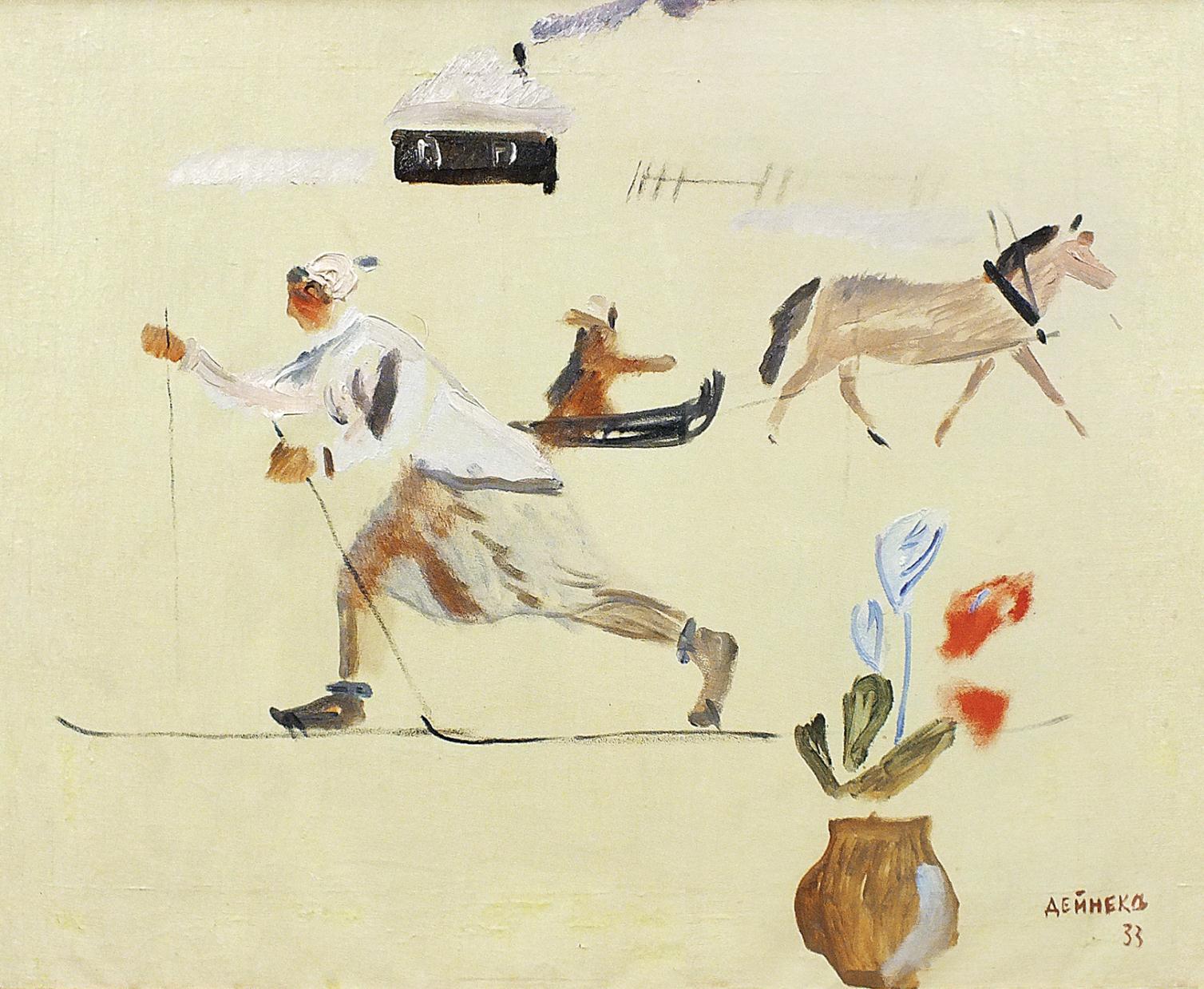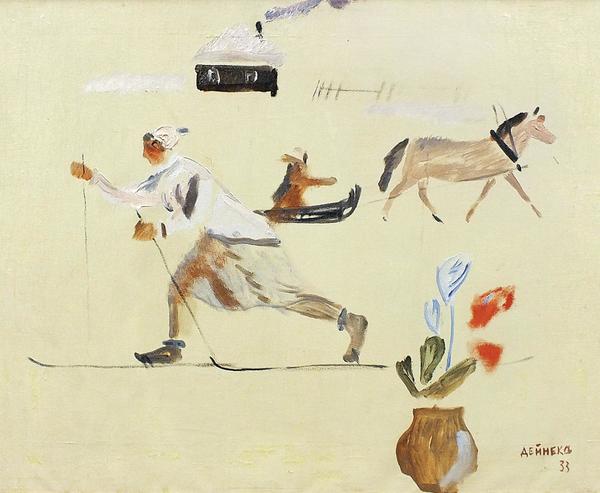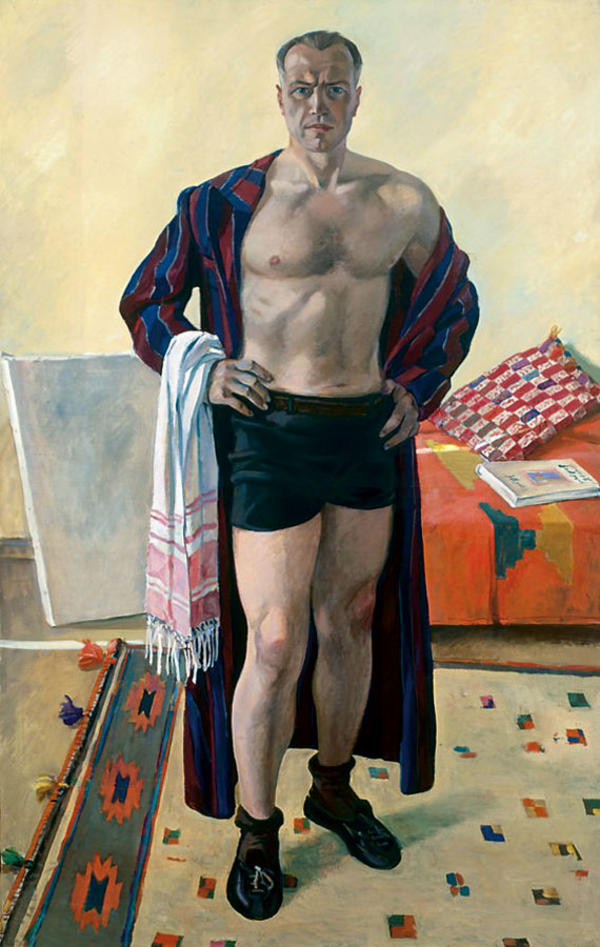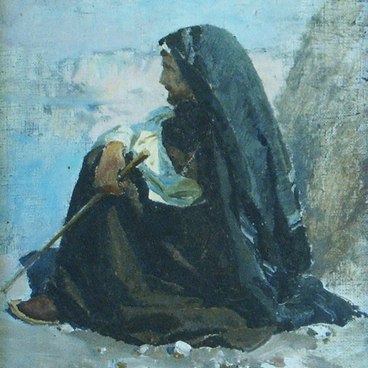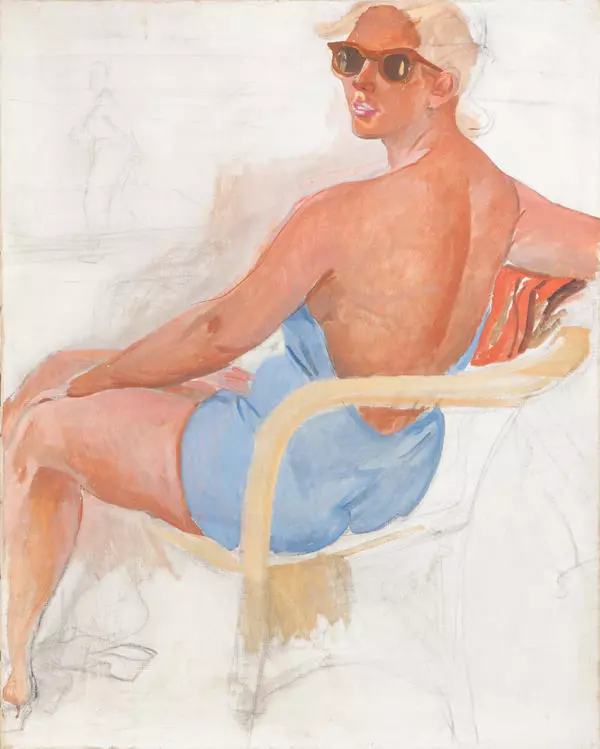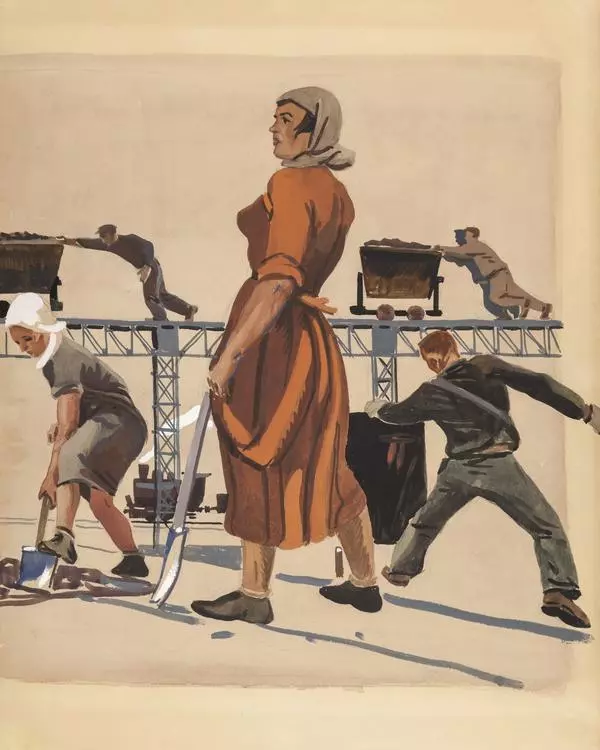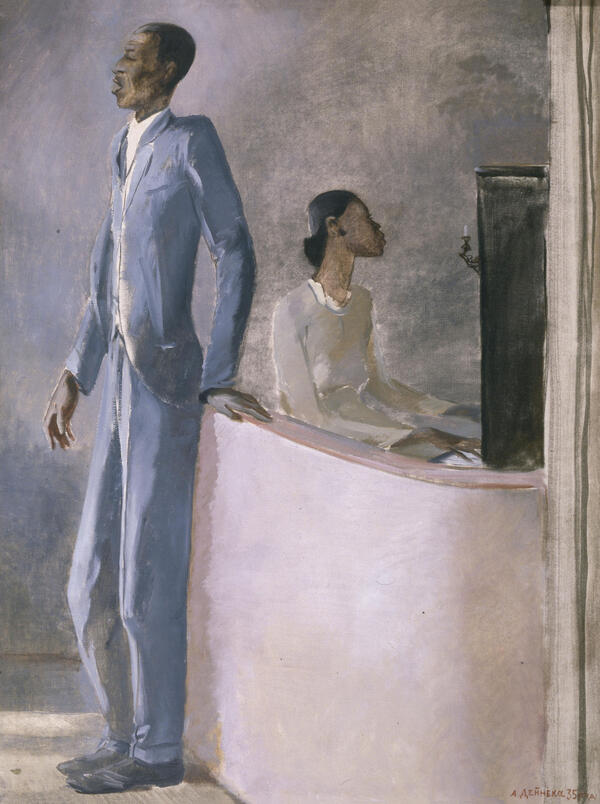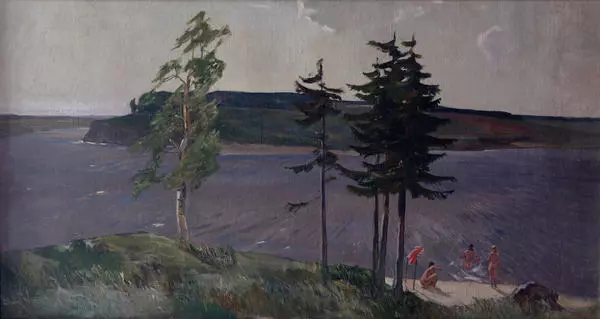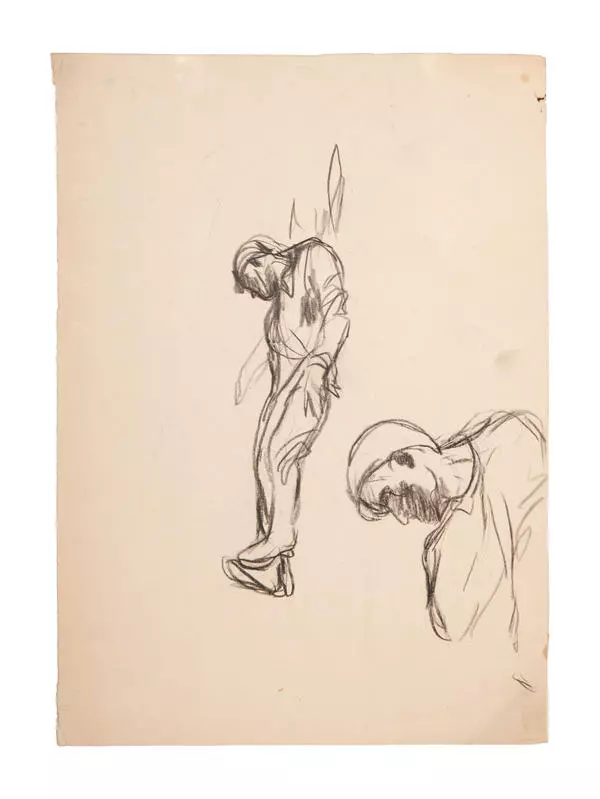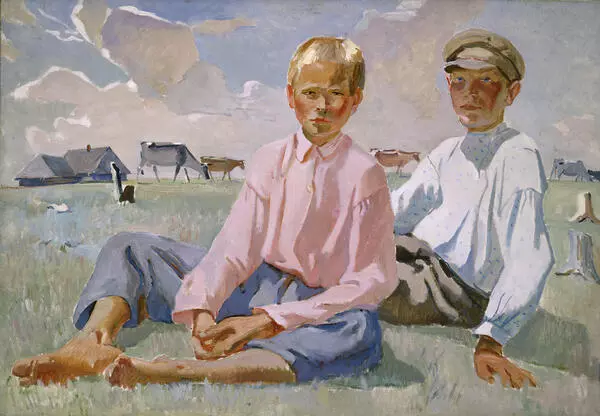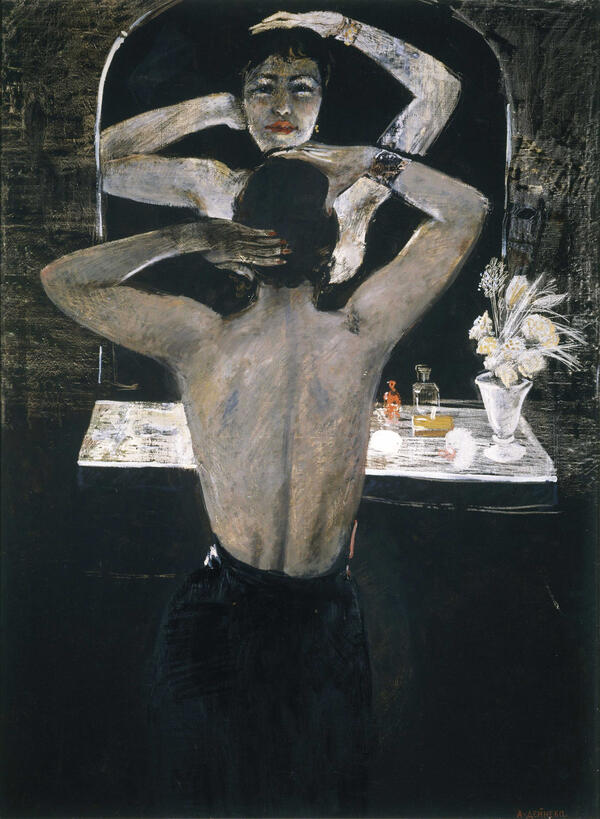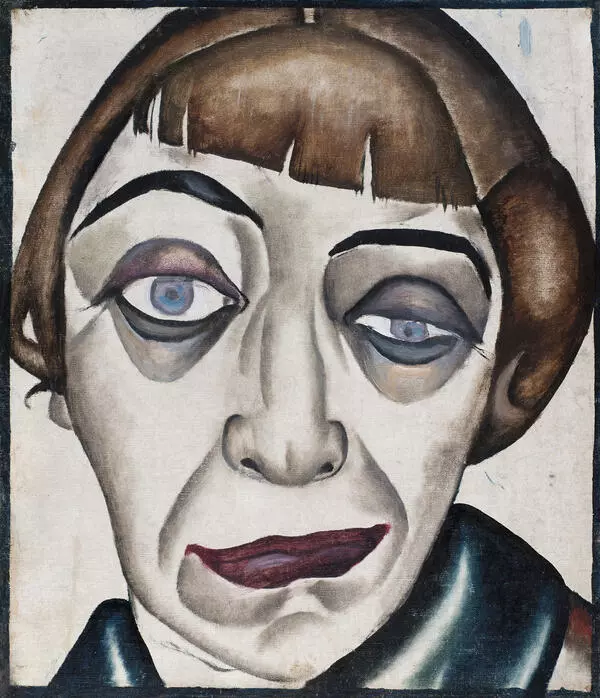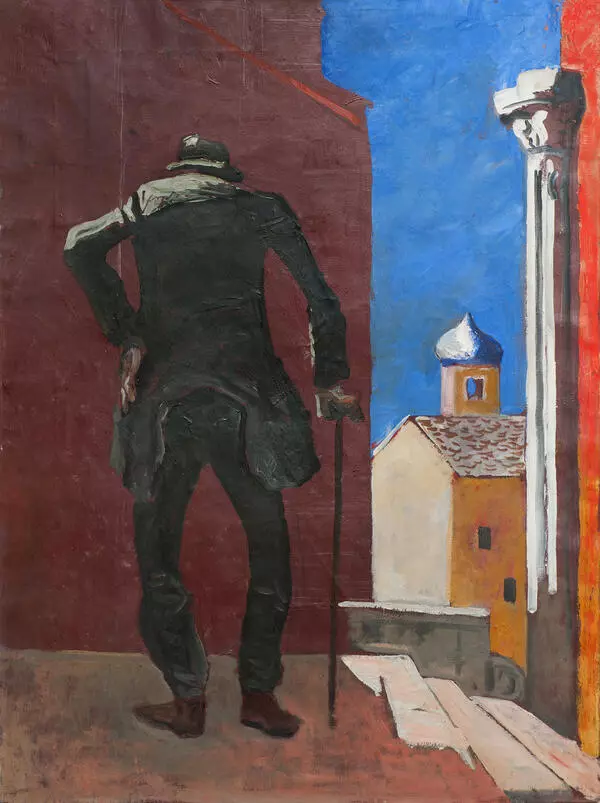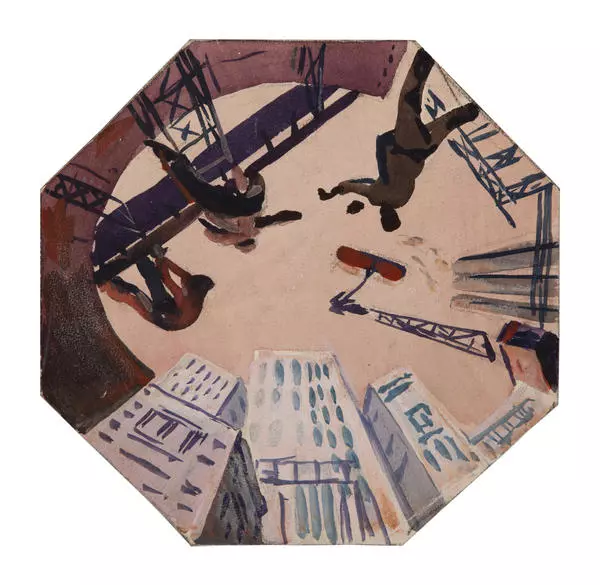Alexander Deyneka is one of the most prominent representatives of Socialist Realism art. He was born in the family of a railway worker in Kursk. He started drawing early. Parents did not support the boy’s aspirations, so, when in 1916 he went to study at the Kharkov Art School, he had to solve his financial problems on his own.
After the revolution he changed jobs. He worked as a teacher at a women’s gymnasium and a criminal search photographer. During the Civil War, he headed an art studio at the political administration in Kursk. Then he studied at VKHUTEMAS under the famous graphic artist Vladimir Favorsky. He did a lot of work for magazines, in particular, he collaborated with The Infidel at the Machine and The Spotlight. His engagement with the world magazine illustration explains the peculiarities of Deyneka’ style. As many of his paintings were preceded by magazine sketches, his 1920s paintings often resemble enlarged drawings.
The main themes of Deyneka’s work were glorification of the Soviet man, creation of the ideal image of a healthy and athletic citizen of the young Soviet country, as well as industrial landscape.
‘The artist must see and understand deeply and clearly what his homeland is like. To know what they want to see. I have to show it in such a way that will make the viewer say, “I have seen it, I know it, I love it, ” wrote Deyneka.
‘The artist must see and understand deeply and clearly what his homeland is like. To know what they want to see. I have to show it in such a way that will make the viewer say, “I have seen it, I know it, I love it, ” wrote Deyneka.
His works are full of verve and optimism, as if they are looking forward to the future, imbued with the pathos of the new Soviet man: a healthy, vigorous, full of vitality and able to overcome any obstacles.
Deyneka loved a risky angle, an unusual perspective. This is a sort of non-standard approach to composition we can see in his work Through the window. 1933, which depicts a woman skiing. According to the artist”s idea, we”re watching her from the window of the room. And to clear up doubts whether we are really in the room or not, the artist put a pot with flowers on the window sill in the corner of the picture, thus delineating the border between the house and the street.
Deyneka creates his most powerful and famous works in the 1920s-1930s. During the war, he produces war themed paintings. In the post-war period, the artist was criticized for “formalism” and “schematism”, and although he tried to adopt a more academic manner, he hardly ever received state orders during this period.
During Khrushchev era, with the onset of “The Thaw”, the attitude to Deyneka changed again, and after the personal exhibition in 1957, he was reinstated as one of the best Soviet artists. On the opening day of his exhibition in 1969, he had a heart failure and passed away a week later.
